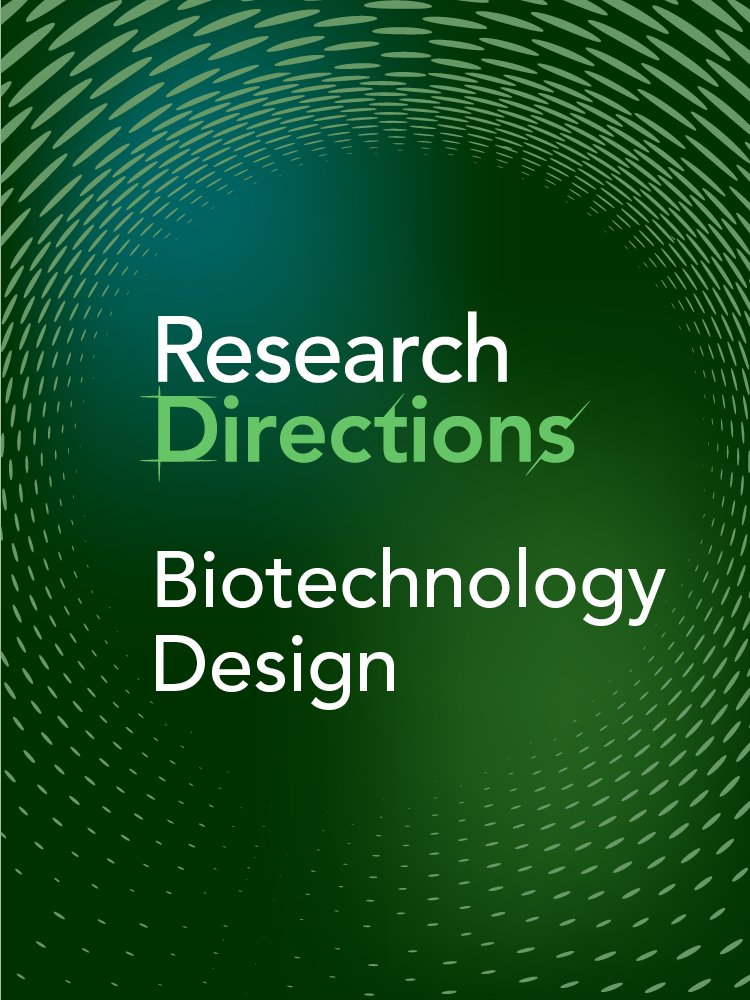Building a new frontier
Martyn Dade-Robertson, Editor-in-Chief of Research Directions: Biotechnology Design, explains more about this emerging branch of science

Can we grow a building? That was the question posed by Editor-in-Chief Martyn Dade-Robertson to kick off the question-led Research Directions: Biotechnology Design journal, launched last year by Cambridge University Press and Assessment.
Biological materials such as wood and limestone have been used in construction for millennia – limestone flooring can be traced back to 7,000 BCE in what is now known as the Middle East, while there is plenty of evidence that wooden constructions were in use in Europe some 10,000 years ago.
But modern biotechnologies may have the potential to design and grow materials for the built environment, and even to allow complex structures to be self-assembled through biological processes. Several promising materials have been identified – including microbially induced calcium carbonate as a cement, or mycelium grown on waste materials, which has potential as a structural or insulation material.
Martyn initially trained as an architect at Newcastle University and, later, returned there as a lecturer – during which time he took a sabbatical to complete a master’s degree in synthetic biology. The decision was partly inspired by the university’s entry to the IGEM (International Competition to Genetically Engineered Machines) competition, in which the team proposed engineered microbes that would be able to swim into microscopic cracks in concrete and trigger a process of bio-mineralisation, thereby filling the cracks.
“I wasn’t working in this area at all but felt like this was a frontier of research and needed expertise from the built environment as well as biosciences,” says Martyn. “I also, however, realised that I needed to skill up – to understand the core science.”
Widening the field
Martyn admits that, while biotechnology is of interest to designers, it is still considered a relatively narrow technical field: “An analogy I often use is with computing in the 1960s. The design of computational systems was largely an engineering endeavour as fundamental concepts in the development of hardware and software were forming, and research was mainly conducted in universities or a few large corporations.

“I see biotechnology as being at a similar stage. So far it has been framed as a largely technical field but, as new applications mean that biotechnology begins to leave the lab and enter the real world, we need to think holistically about applications and implementation. The holistic approach of designers may also lead to new technology innovations, as well as the considerations of societal impacts and ethics in this emerging technology.”
The first question in the journal: ‘Can we grow a building?’ came about as a result of Martyn’s interests in architecture, and he anticipates other built environment related questions being seeded over the next few years.
He explains: “I see architecture as a sibling of the sciences. My heroes include the architect Buckminster Fuller; when I was doing my synthetic biology course, I remember opening a cell biology text book and finding that, in describing the structure of a cell, Fuller was referenced. Cells maintain their shape through a structure which is both in tension and compression – known as tensegrity. Fuller had ‘invented’ tensegrity before it was discovered in cells. For me, this is an example of how design can precede scientific discovery and how architectural design enables a unique form of spatial, material, and structural thinking.”
Back to the future
The ethos of the question-led Research Directions series is to build research around key challenges that require input from more than one discipline, and to support the whole research journey from early ideas and concepts through to applications and real-world impact. Martyn says: “It goes beyond the special issue model of traditional publishing to try to build contributions around coherent questions (both specific and broad) – of which many last for months or years, depending on the contribution. I see it, following the analogy with biology, as sowing seeds – some of which will grow and proliferate as the contributions grow.”
Having been involved in scoping the new journal before it’s launch, Martyn reports that he was honoured to have been appointed Editor-in Chief, a move that has already given him new opportunities, extended his network, and allowed him to work with what he describes as the “dream team” at Cambridge.
His excitement over the future of the journal is palpable: “We have launched a barrage of new questions and gone through an extensive process of selecting the editorial team. We are testing different sorts of question and different approaches to see which approach gets a critical mass.
“Over the next year we will also be attending a number of events where the journal is a sponsor, including the Bio Design Challenge (BDC) in New York and a new event called Bio Futures at Northumbria University. I would like to be able to sustain and grow at least five or six questions in the short term, with a dozen or more in future leading to an interconnected ‘ecosystem’ of contributions helping to shape the long-term direction of the field.”
It is perhaps telling that, in his spare time, Martyn designs and assembles his own watches, and occasionally writes science fiction: “I’ve completed a few short stories and am working on a novel. But unless Research Directions: Biotechnology Design starts to accept short fiction I suspect these will remain unpublished!”






